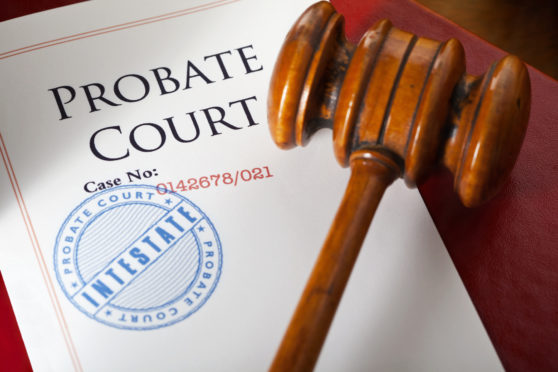INDEPENDENT FINANCIAL ADVICE ON MONEY MATTERS AROUND THE HIGHLANDS, ISLANDS & MORAY
 An increasingly effective estate planning strategy
An increasingly effective estate planning strategy
Pensions became an effective Inheritance Tax (IHT) planning tool when pension freedoms were introduced back in April 2015. They offer the ability to pass on entire pensions either tax-free or at a substantially lower tax charge, however, this opportunity has slipped under the radar for some.
While your property, investments, assets and possessions all may fall within your estate and be liable to IHT, current legislation allows you to pass your pension wealth down through the generations free of IHT. Therefore, keeping pension wealth within your pension fund and passing it on to any beneficiaries can be an efficient estate planning
strategy.
The way in which the death benefits are taxed depends on the age of the policy holder. Firstly, pension fund holders who die before reaching the age of 75 can pass on part or all of their pension fund to their beneficiaries, up to the value of the lifetime allowance (£1.055 million in 2019/20). This can be passed on as a tax-free lump sum or it can be passed on as an income. However, this is slightly different if death occurs at, or after the age of 75, as in this case the lump sum and/ or the income will be liable for tax at the beneficiary’s marginal rate for that given tax year.
If you are thinking about using your pension to mitigate your IHT and pass on pension wealth, you need to fully understand your options.
Some key points to consider are:
- Know what death benefit options you want from your pensions and check whether or not your plan falls outside of your estate.
- Most pensions will be outside of your estate and not be liable for IHT, but a dilemma may arise with older plans. If that applies to you, weigh up whether or not it makes sense to transfer your pot into different pension schemes that will offer what you want. Ensure you speak to one of our professional financial advisers before you do this to make sure you will not be walking away from valuable benefits or guarantees.
- Review your beneficiaries and notify your pension provider of any changes you wish to make when your circumstances change. This is a particularly important consideration if you are over the age of 75 and, as mentioned above, the death benefits become taxable at your beneficiaries’ highest marginal rate.
- Updating who you wish to leave your pension pot to is not the same as updating
your legally valid Will. Both the Will and your pension provider may need updating.
Get Expert Help
David McConachie Chartered Financial Planner Campbell & McConnachie
David McConachie APFS is a Chartered Financial Planner at Campbell & McConnachie, which is authorised and regulated by the Financial Conduct Authority.
visit Campbell & McConnachie website for more information.
 DID YOU KNOW?
DID YOU KNOW?
- Do you know your pension options on divorce or
dissolution?
In Scotland since 2006/07 the number of divorces has decreased in each year, reaching a low of 6.87 thousand in 2017/18. - Dividing pensions in financial settlements
In divorce or dissolution, the pension can be the biggest asset after the family home. You can split pensions several ways, so it’s worth understanding the options before deciding what’s best for you. - Pensions you can divide – a starting point
Start by listing all the different pensions you and your ex-partner have, and get a copy of the rules for each scheme. Remember there may be old pensions you’ve lost track of, a good Financial Adviser can help you trace any lost pensions
What exactly can be divided depends on where in the UK you’re divorcing or dissolving your civil partnership. - In Scotland
Only the value of the pensions you have both built up during your marriage or civil partnership is taken into account. - How you can split pensions
There are three main options in Scotland – offsetting, sharing and earmarking. Each is different and what’s right for you will depend on individual circumstances, so good advice is vital. - What about “silver splitters”?
If you and/or your ex-partner have retired, the pensions can still be split, but the rules are different.
Alastair Jappy DipPFS is Managing Director of City Financial, which is authorised and regulated by the Financial Conduct Authority.
visit City Financial website for more information.
Next month’s topic is on ‘It won’t happen to me!’
Your Local to Highlands, Islands and Moray Contributors – Click to visit their website.







